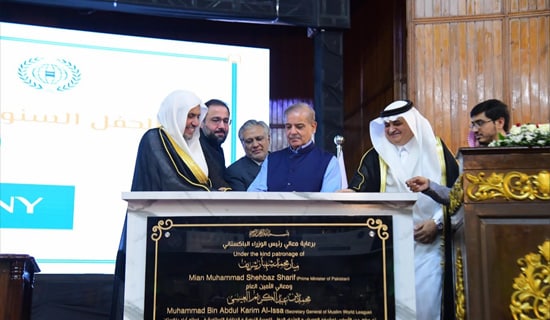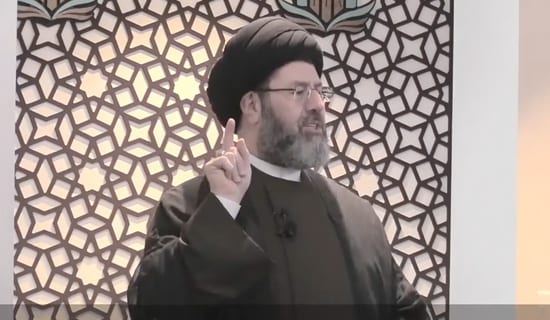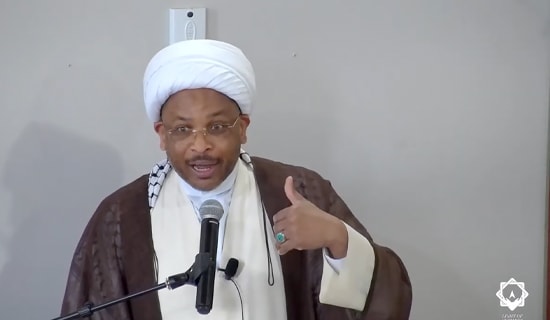Introduction
In his just-published memoirs, French Foreign Minister Philippe Douste-Blazy relates the story of a meeting between three European foreign ministers together with Javier Solana of the European Union and President of Iran Mahmoud Ahmadinejad. The meeting, which took place at the United Nations on September 15, 2005, dealt with what Douste-Blazy characterized as "the generous European offer" to Iran regarding its nuclear program. Ahmadinejad was characterized by Douste-Blazy, a surgeon and a professor of medicine by profession, as stubborn, and the meeting was described as leading nowhere. Suddenly, Ahmadinejad changed the course of the conversation with the following aside: "Do you know why we should wish to have chaos at any price?" he asked rhetorically. "Because, after the chaos, we can see the greatness of Allah." [1]
The response to this challenge came from the Kingdom of Saudi Arabia, which employed recently a quiet but effective diplomacy aimed at curbing Ahmadinejad's inclination for chaos-making in their backyard.
U.N. Sanctions Against Iran
After protracted negotiations among the five permanent members of the Security Council - the U.S., the U.K., France, Russia, and China, in addition to Germany, which was occupying one of the rotating seats in the council - the Security Council passed, on December 23, 2006, Resolution 1737, imposing watered-down sanctions on Iran for its failure to halt its uranium enrichment program. The resolution calls on all states "to prevent the supply, sale or transfer…of all items, materials, equipment, goods, and technology which could contribute to Iran's enrichment-related, reprocessing or heavy water-related activities or to the development of nuclear weapons delivery systems."
From the standpoint of Ahmadinejad, the resolution was "a straw paper…by which they [i.e., mainly the Western powers] aim to scare Iranians…." Immediately afterwards, Supreme National Security Council Secretary Ali Larijani, who is in charge of Iran's nuclear dossier, told the Iranian daily Kayhan, "Our immediate response to these sanctions is that tomorrow morning, 3,000 centrifuges will begin operation in Natanz."
The Saudi Oil Weapon
Saudi Arabia, like other countries, is concerned both about Iran's nuclear program and about its activities in Iraq in support of the Shi'a, in Lebanon and in Palestine. While being somewhat silent about Iran's nuclear program, Saudi Arabia's condemnation of Iran's meddling in the Middle East was vocal. Saudi Foreign Minister Saud Al-Faisal could not have been more blunt when he told the French daily Le Figaro, "We repeat what was said to the Iranians: Do not interfere in our affairs." He characterized the Saudi-Iranian dialogue as an effort to explain to the Iranians the Saudi and Arab fears "about the Iranian influence on the Arab world." For this reason he rejected the French attempt to send a delegation to Tehran to discuss the latter's meddling in Lebanon as something "that cannot be accepted [because it] offers legitimacy to the Iranian intervention." [2] The critical question is whether Saudi Arabia is prepared to translate its warning into action through the use of the "oil weapon." If the Saudis are prepared to apply the oil weapon, the impact on Iran's economic fortunes could be significant.
A brief analysis of the Saudi oil situation and the Iranian economic condition will demonstrate why Iran has every reason both to take seriously Saudi warnings about meddling in the Saudi backyard and to be apprehensive about the potent oil weapon.
The Saudi Budget Surplus
After deficits of $10.4 billion and $8 billion in 2003 and 2004, respectively, Saudi Arabia accumulated a surplus of revenues over expenditures of $58.2 billion and $70.6 billion in 2005 and 2006, respectively. The surplus for 2007 is conservatively estimated at $5.3 billion because the estimated revenues of $106 billion are calculated on the basis of crude oil export of 7.2 million b/d at an average price of $37/b, assuming a production cost of $2.50/b. [3] Since the price of oil in the first six weeks of 2007 has hovered around the mid- to upper 50s per barrel, and if there is no sudden and sharp reversal either in the price per barrel or the number of barrels exported, it is clear that Saudi Arabia will accumulate a much larger surplus than was estimated.
At the same time, Saudi Arabia has announced its intention to expand production capacity to 12 million b/d by 2009 through investment of $80 billion. At this level of production 1.5 to 2 million b/d will be set aside for local consumption, leaving at least 10 million b/d for export which is about 3 million b/d over current level of export.
Providing this information, Saudi Oil Minister Ali Al-Nuai'mi said at a Petrotec conference in New Delhi that his country could invest even more to generate higher levels of production to insure stability in the oil markets. [4] It is not certain that there is a refining capacity for such an additional supply of oil were it made available to the market, but it could nonetheless serve as a spare capacity that could be used by the Kingdom to leverage oil supply and prices in a manner compatible with its national interests, which are not necessarily compatible with those of Iran; indeed, the interests of the two nations may be very different.
If Saudi Arabia were to increase its export between one to two million barrels a day, it could bring down the price of oil quite close to the 2007 budget estimate of $37 barrel. If that were to happen, Saudi Arabia could absorb the shock, but Iran's economy could fall into a serious crisis.
Iran's Economy in a Glance
While Iran is seeking to develop its nuclear weapon and thereby declare itself "a great power," its economic health belies its ambitions.
Data drawn from the Central Bank of Iran [5] show an accumulated deficit spending in the last four [solar] years 1381-1384 and the second quarter of 1385, as follows:
| Year | Billion Riyals ($US equivalent at exchange rate of 9.17 riyal to the dollar in parentheses)
|
| 1381 (2003 | 85.6 (9.3) |
| 1382 (2004) | 99.4 (10.8) |
| 1383 (2005) | 128.5 (14.0) |
| 1384 (2006) | 130.5 (14.2) |
| 1385 (2007) (2ndQrt.) | 49.0 (5.3) |
To deal with the budget shortfalls and, at the same time, continue the president's profligate populist policies, Iran has been drawing on the special foreign exchange account which was meant to cushion the country in the event of a rapid shortfall in oil revenues. According to the daily Etemad-i-Melli, the Iranian Majlis (Parliament) voted on January 24 to allow the government to withdraw from the account the equivalent of $700 million to finance shortfalls in the health and health-education sectors, including the payment of overdue wages. During a contentious debate in the Majlis on the government's request, a member of the parliamentary Economic Committee, Elias Naderan, claimed that "the foreign-exchange reserve account has no cash in it to take out." Another member of parliament, Ahmad Tavakkli, claimed that the fund had a balance of only $400 million and wondered where exactly the remaining $300 million would come from.
As for the 2007 budget which starts on March 1, there are conflicting reports on the estimated price of crude oil calculated for the revenue column. One report presumes a per barrel price of $33.70 while Nedaran, quoted earlier, maintains that government spending is based on the assumption of oil price of $45 per barrel.
At the same time, the inflation rate in Iran has been estimated at 15.8 percent, while unemployment was in excess of 10 percent. In a rare acknowledgement of the impact of the sanctions on Iran, Iranian oil minister Kazem Waziri Hamaneh told Shana, the oil ministry news agency, that Tehran was having trouble financing oil projects on which the economy depends. Foreign banks are not lending to Iran either because of U.S. pressure or because the banks are also "drawing their own conclusions." [6] In this regard, Iran's threats to use the oil weapon if attacked are hollow at best, because the country cannot fund the most basic programs for too long without the steady flow of oil revenues.
These concerns have generated calls from Expediency Council Chairman Ali Akbar Hashemi-Rafsanjani and Judiciary Chief Ayatollah Mahmud Hashemi-Shahrudi for an acceleration of privatization plans and backing for private-sector activities both as a means of reducing subsidies to failed public enterprises and to help integrate the Iranian economy into the global system. [7]
Ahmadinejad has pursued a populist program to benefit the underclass in Iran. However, populism without funding will become empty slogans. This, in turn, could greatly weaken his authority and undermine his regime's stability. There is already mounting pressures from the clerics to tone down his demagoguery, and a rise of discontent among the poor could quickly place him in political jeopardy. The oil option of Saudi Arabia, more than anything else, including the U.S.'s second aircraft carrier steaming into the Gulf, could expedite the process of his downfall or, at a minimum, cause him to limp for the remainder of his term of office.
Iran's Appeal to Saudi Arabia to Reduce Oil Export
It is hardly surprising that the Deputy Chairman of Iran's Parliamentary Committee for National Security and Foreign Policy Mohammad Nabi Roudaki has made this statement:
"A number of Arab countries in the region and the Saudi government are inclined to help the U.S. and want to pressure Iran... We recommend to Saudi Arabia that it trust [only] itself, and that it bring about regional stability with the accompaniment of the forces in the region. It is best that Saudi Arabia do nothing [against Iran], since [otherwise] they will quickly face protest by their people. Saudi Arabia must reduce its oil exports so that the price of oil will balance out. Otherwise, tomorrow America will attack Saudi Arabia, on the pretext that it has no democracy and freedom."
*Nimrod Raphaeli is Senior Analyst of MEMRI's Middle East Economic Studies Program.
[1] Al-Sharq Al-Awsat (London), February 4, 2007.
[2] Al-Sharq Al-Awsat (London). February 1, 2007.
[3] The Middle East Economic Survey. January 2007.
[4] Al-Hayat (London), January 19, 2007.
[5] Bank Merkazi Iran, Second Quarter 2006-2007, No. 45. Key Economic Indicators.
[6] The Financial Times (London), December 21, 2006.
[7] Radio Free Europe/Radio Liberty, http://www.rferl.org/, February 2, 2007.





